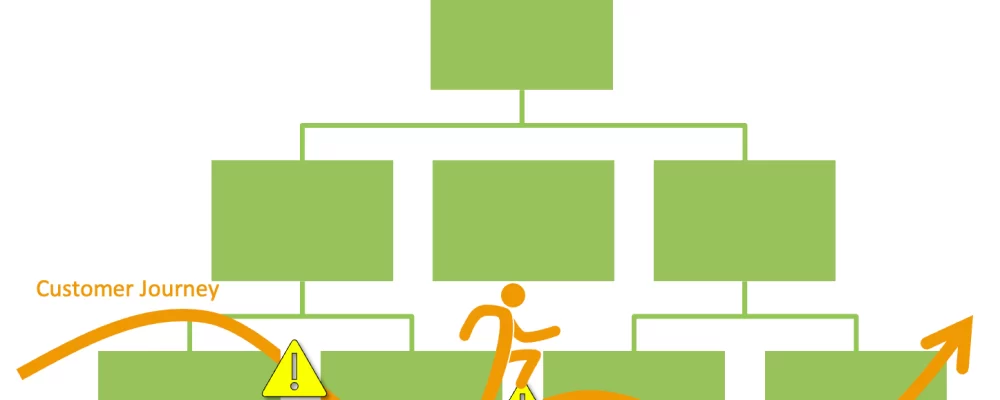Clear, well-defined strategy is essential for a business’s success. Without a detailed, thoughtful strategy, a business can wander through the wilderness. Within the domain of well-defined strategy, there are three uniquely different and crucial strategy types:
- Business strategy
- Operational strategy
- Transformational strategy
These three different strategies are crucial for a business’s success. While they are distinct entities, it is worth noting that a common consideration across all types of strategy is your people, process, and technology. Without this, strategy is a set of lofty ideas, ungrounded in reality and unaccompanied by a plan of action. Connecting “lofty ideas” to practical, well-thought-out steps is the key to successful strategy implementation.
Let’s look further into each of the three types of strategy that are key to a business’s success.
1. Business Strategy: Customer Experience
The first of the three types of strategy is Business Strategy, which focuses on how your customer will experience your business. It is primarily concerned with how a company will approach the marketplace and asks questions like “Where do we play?” and “How do we win?”
“Where do we play?” covers questions like:
- Which customer segments will we target?
- Which geographies will we cover?
- What products and services will we bring to market?
“How do we win?” covers questions like:
- How will we position ourselves against our competitors?
- What capabilities will we employ to differentiate us from the competition?
- What unique approaches will we apply to create new markets?
Senior managers typically create the business strategy. After it is created, business architects play an essential role in clarifying the strategy, creating tighter alignment among different strategies, and communicating the business strategy across and down the organization clearly and consistently.
Executives are just beginning to bring advanced, highly credible business architecture practices and purpose-driven CX design into the strategy discussions early to provide tools, models, and facilitation that enable better strategy development.
Resource: Check out our ebook “How to Design an Elevated Customer Experience” to discover tools you can apply to your business strategy for a customer-centric business model!
2. Operational Strategy: People & Process
The second of the three types of strategy is Operational, which focuses on your people and your processes. It is primarily concerned with accurately translating the customer-centric business strategy into a cohesive and actionable implementation plan.
Operational strategy answers questions like:
- Which capabilities need to be created or enhanced?
- Which processes need improvement or a complete redesign?
- Do we have the people we need, and do they have the right skill base? (Ex: talent retention plans through Strategic Learning and Development programs.)
Resource: Interested in employee retention and talent development as a part of your operational strategy? Download our latest ebook, “How to Do Strategic Learning and Development”!
Most business architects are currently working in the operational strategy domain, reaching up into the business strategy domain and communicating with leadership for direction.
They work from the middle out to bring clarity and cohesiveness to the organization’s operating model, typically working vertically within a single business unit while resolving issues at the business unit boundaries. More mature business architecture practices work cross-functionally and in multiple verticals or move from one vertical to another. Leadership and business architects who are successfully delivering in one role should be actively developing the skills they need to move into other strategy domains.
3. Transformational Strategy: Platform Technology
The third strategy type is Transformational, which focuses on how your technology can enable and transform your organization. We aren’t talking about automation… we are talking about true digital business model transformation. It is seen less often as it represents the wholesale transformation of an entire business or organization.
This type of strategy goes beyond typical business strategy, requiring radical and highly disruptive changes in people, processes, and technology.
Transformational strategy is generally the domain of the Project Management Office (PMO), organizational development, and consultants. Few organizations go down this path willingly and with a reasonable expectation of the resources it takes.
These efforts are incredibly complex and require highly experienced and knowledgeable technical resources. At Accelare, we called them Platform Design Engineers. There is also a significant benefit from applying business architecture discipline though it is rare to see business architects playing a considerable role here.
What is the Bottom Line?
Not all strategy work is the same. Each strategy type requires a unique set of skills, resources, varying approaches, and plans to execute that strategy. Here at Accelare, we are experts in working with businesses of any size to develop successful strategies for transformation, operations, and business. Use our expertise to create a competitive advantage for your business today.
If you would like to assess your organization’s ability to implement the three types of strategies above, take our four-minute Strategy to Execution (S2E) Assessment. Upon submission, you’ll receive your organization’s S2E assessment report containing:
1. An In-Depth Overview of Accelare’s Four S2E Domains
2. Your Organizational S2E Readiness Assessment
3. Domain-Specific Opportunities Based on Your Responses
4. Your S2E Maturity Level Defined
5. Next Steps!
Accelare “provides digital transformation consulting services that prioritize performance and results. Accelare’s S2E process and WorkFit are proven to create dramatic breakthroughs and lasting innovations integrated into the business model to build the capacity needed to transform into your next-generation business model.”
Please visit the firm link to site






